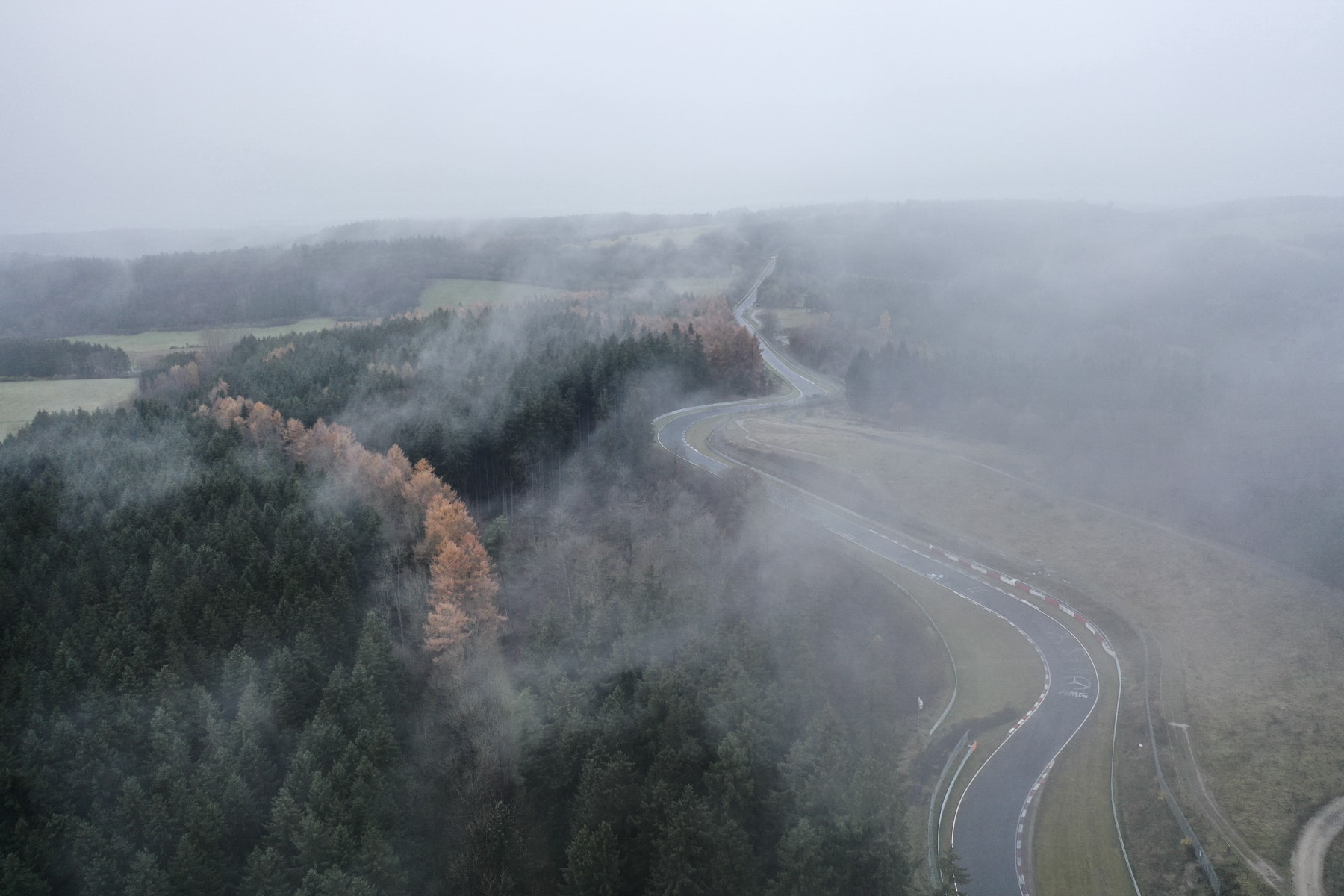
Explore
THE FASCINATION AND THE MYTH OF THE NÜRBURGRING

The number 1 racetrack
The Nürburgring is one of the longest, most challenging and, last but not least, most beautiful race tracks in the world. Since its opening in 1927, breathtaking stories have taken place on this fascinating track. The Nürburgring asphalt is thus loaded with unique racing emotions of a global history that will never be forgotten. International motorsport legends were born there, and extraordinary moments were experienced.
World premiere with Nürburgring asphalt
One hundred years of racing history from the Nürburgring meeting consummate, top-class Swiss watchmaking art is thus far unique in the watch industry. It is a world premiere for every racing fan and watch lover. For the first time and in limited edition, a piece of original racing history can be worn up close. We are pleased to have developed the first asphalt watch in the world in cooperation with the Nürburgring.
Flood disaster in the Ahrtal
While we were working on our project, a terrible event occurred in the immediate vicinity of the Nürburgring. More than 100 people lost their lives in the flood disaster in the Ahrtal on July 14, 2021. Even today, many people continue to struggle with the consequences of this catastrophe of the century. It is of great importance for us to support these people.


The most challenging.
The most demanding.
The most historic.
The longest.
The most beautiful racetrack in the world.

Foto: Evers, Joost / Anefo, CC0, Wikimedia Commons
The “Green Hell”
Three-time Formula 1 world champion Sir Jackie Stewart referred to the racetrack, which is surrounded by woods and hedges, as the “Green Hell” because of its difficult layout. Whenever he left his house in Switzerland in the direction of the Nürburgring, he looked through the rearview mirror into the courtyard driveway because he didn’t know if he would return again. And Sir Jackie Stewart is not the only driver who had great respect for this magical place. For example, Germany’s first post-war idol, racing driver Wolfgang Graf Berghe von Trips, as well as Michael Schumacher, Ayrton Senna and James Hunt, all loved to take up the challenge on the Nürburgring asphalt. Their credo was “whoever passes on the Nürburgring can win anywhere”.
LEGENDARY ASPHALT LAYER
The Nürburgring is the place where the “Silver Arrow” and the Auto Union Types were born. Niki Lauda’s tragic fire accident in 1976 also occurred on the Ring. It was the last race of the motorsport king class on the Nordschleife. The 89 left-hand and 84 right-hand corners of the original 28 km long asphalt section were life-threatening for the drivers. The asphalt of the Nordschleife is loaded with emotion. Today, the Nordschleife is 20.832 km long.

Foto: kitchener.lord/Flickr.com

Foto: Edvvc from London, UK – 1985 Porsche 962, CC
The fastest lap on the Nürburgring
On May 28, 1983, racing driver Stefan Bellof became a legend. He clocked 6:11.13 minutes on the Nürburgring-Nordschleife. That is the fastest lap ever driven in an official race to this day. With his Porsche 956 and an average speed of 194.33 km/h, he left a significant mark on the asphalt with this record.



